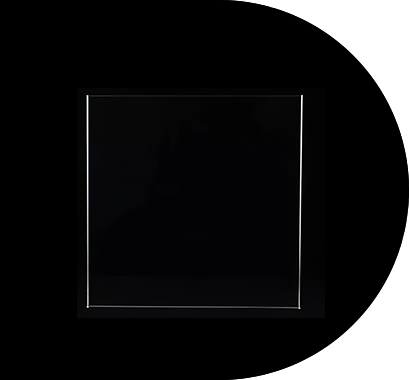The Role of Glass in Modern Architecture
Glass has long been a staple in architectural design, offering transparency, light transmission, and a sense of openness. As the demand for energy-efficient and sustainable building materials grows, low reflective laminated glass has emerged as a superior option in modern architecture. This innovative glazing solution provides several advantages, including enhanced energy efficiency, reduced glare, and improved aesthetic appeal. In this article, we will explore the benefits of low reflective laminated glass and how it is revolutionizing contemporary architectural designs.
What is Low Reflective Laminated Glass?
Low reflective laminated glass is a type of glass that has been treated to reduce the amount of reflected light. This is achieved by applying special coatings or using specific materials during the manufacturing process to minimize reflection. The laminated structure typically consists of two or more layers of glass bonded together with an interlayer, which can also provide additional benefits such as enhanced safety, sound insulation, and UV protection. The result is glass that offers clearer visibility and less interference from glare, making it ideal for a variety of architectural applications.

Enhanced Aesthetics and Transparency
One of the most prominent benefits of low reflective laminated glass is its ability to enhance the aesthetics of a building. Traditional glass can create unwanted reflections that distort the building’s exterior and interior views. Low reflective laminated glass, on the other hand, minimizes these reflections, offering clearer, more consistent visibility from both inside and outside the building.
This feature makes it an excellent choice for modern architecture, where clean lines and uninterrupted views are highly valued. Whether used in windows, facades, or skylights, low reflective laminated glass helps create a sleek and sophisticated appearance that complements the design without compromising functionality.
Reducing Glare and Improving Comfort
Glare is a common issue with traditional glass, especially in buildings with large windows or glass facades. Glare can cause discomfort for building occupants and affect the interior ambiance. Low reflective laminated glass significantly reduces glare, making it an ideal solution for office buildings, residential spaces, and commercial establishments with expansive glass surfaces.
By minimizing glare, this type of glass helps maintain a more comfortable and productive indoor environment. It allows natural light to penetrate while reducing harsh reflections that can interfere with visual clarity and comfort. This is particularly beneficial in spaces like conference rooms, living rooms, and retail spaces where clear visibility and a pleasant atmosphere are essential.
Improved Energy Efficiency and Temperature Control
Low reflective laminated glass plays a significant role in improving a building’s energy efficiency. The reduction of glare and reflected heat means that less energy is required to cool the interior spaces, especially in warm climates. Additionally, the laminated structure helps to reduce solar heat gain, which can contribute to lower cooling costs in buildings with large glass facades or windows.
The enhanced energy efficiency of low reflective laminated glass makes it an excellent choice for sustainable architecture. By reducing the amount of heat entering a building and enhancing insulation, this glass helps regulate indoor temperatures and can lead to significant cost savings on heating and cooling. It is particularly beneficial in eco-friendly and LEED-certified building designs.
UV Protection and Interior Preservation
Another key benefit of low reflective laminated glass is its ability to block harmful ultraviolet (UV) rays. UV rays can cause fading and damage to furniture, artwork, flooring, and other interior elements. With its UV-blocking capabilities, low reflective laminated glass helps protect the interior of a building from UV damage, preserving the appearance and longevity of interior furnishings.
This UV protection is especially important in spaces with valuable artwork, antiques, or delicate materials that are susceptible to fading. By incorporating low reflective laminated glass into window and glass wall designs, architects can help safeguard these interior elements while still allowing natural light to enter the space.
Sound Insulation and Noise Reduction
In addition to its visual and energy-related benefits, low reflective laminated glass also offers improved sound insulation. The laminated construction, with its interlayer, provides better noise reduction compared to single-pane or traditional glass. This makes it an ideal choice for buildings located in noisy urban environments or near busy roads, airports, or railways.
By reducing external noise, low reflective laminated glass contributes to a more peaceful and comfortable indoor environment. This feature is particularly valuable in residential buildings, hotels, and office spaces where quietness and tranquility are important for the occupants’ well-being and productivity.
Applications in Modern Architecture
Low reflective laminated glass is becoming increasingly popular in a wide range of architectural applications. It is commonly used in high-rise buildings, skyscrapers, shopping centers, and residential complexes, where its aesthetic appeal, energy efficiency, and comfort-enhancing qualities make it an ideal choice. Additionally, its durability and ability to resist breakage make it a great option for enhancing building safety.
It is also frequently used in interior glass partitions, atriums, and curtain walls, where both the visual and practical benefits of the material can be fully realized. As sustainable building practices become more prevalent, low reflective laminated glass continues to play a vital role in reducing environmental impact while enhancing the functionality and design of modern architecture.
Conclusion: The Future of Low Reflective Laminated Glass in Architecture
Low reflective laminated glass is a versatile and valuable material in modern architectural design. Its ability to reduce glare, improve energy efficiency, provide UV protection, and enhance aesthetics makes it an essential component in creating high-performance, sustainable, and comfortable buildings. As architects continue to push the boundaries of design, the use of low reflective laminated glass will undoubtedly become more widespread, helping to create buildings that are not only visually striking but also environmentally responsible and comfortable for their occupants.





